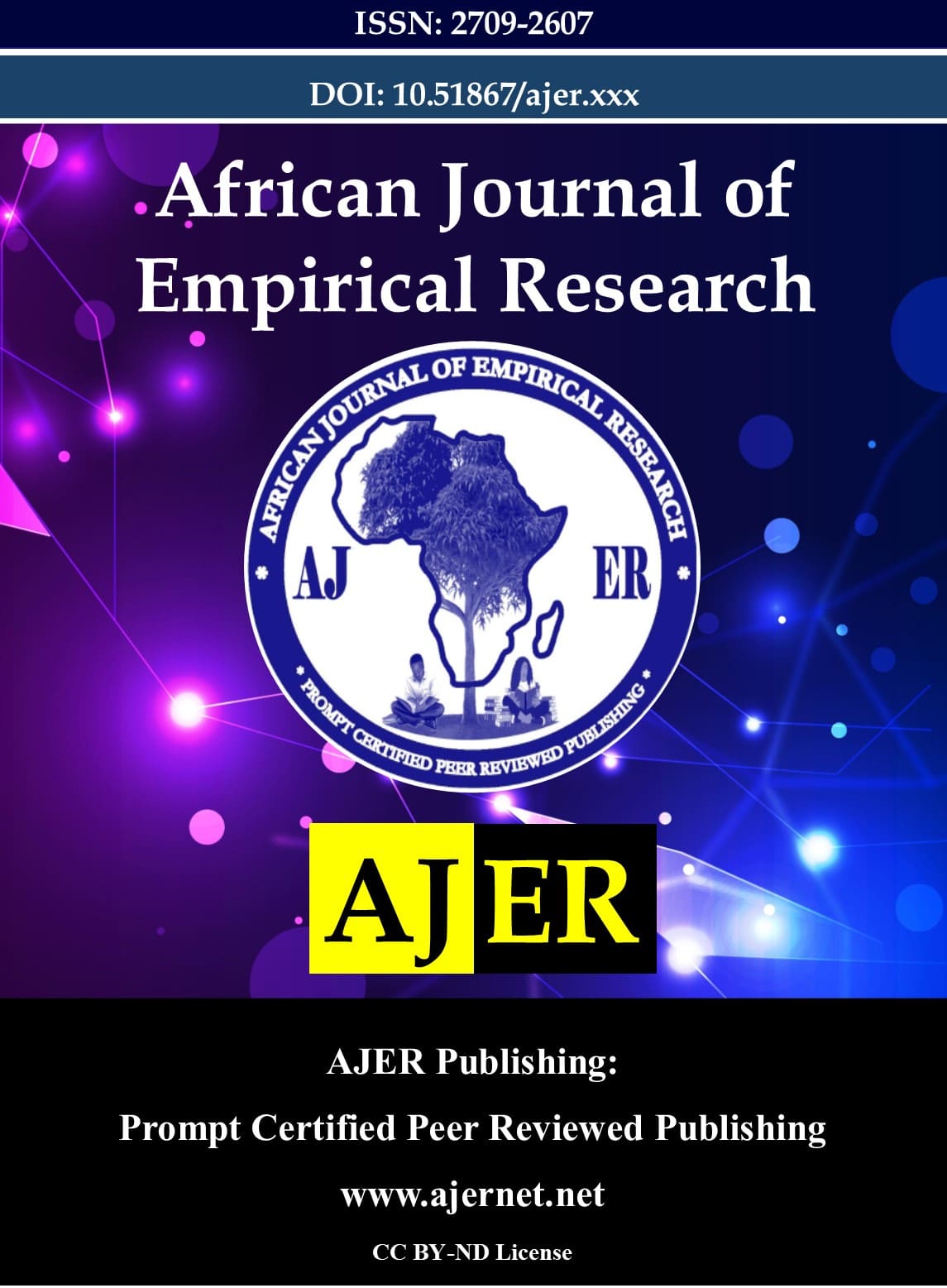Assessment of factors affecting mobile money transactions in Tanzania: A case of Yas agents in Dar es Salaam City Council, Dar es Salaam region
Keywords:
Financial Factors, Inflation Factors, Multiple Regulations, Mobile Money Transactions, Yas AgentsAbstract
Tanzania’s financial ecosystem has undergone significant transformation over the past two decades, driven by the rapid growth of digital financial services and financial technology. The innovation of mobile money services has played a crucial role in bringing financial services to previously underserved populations, especially in rural areas where large populations were unable to access formal financial services. Despite these efforts, there exist challenges that hinder the participation of the majority of people in mobile money transactions, hence contributing to the underutilization of the full potential of digital financial services and financial technology. This study aimed at assessing the factors affecting mobile money transactions in the country with a focus on Yas agents in Dar es Salaam City Council. It specifically investigated demographic characteristics that may influence participation in mobile money business and dwelled on the effects of inflation factors, financial factors, and multiple regulations on mobile money transactions. This research was guided by three theories: Friedman's Monetary Theory, the Financing Constraint Theory, and Agency Theory. Both quantitative and qualitative research methods were used in this study. The target population is Yas mobile money agents in the study area. The methods of data collection were cross-sectional surveys using structured questionnaires administered to a sample of 89 mobile money agents. Analysis was done using MS Excel to produce graphs, means (x̅), and standard deviations (Std dev). The results revealed that to a large extent (mean 3.69, std. dev. 1.91), respondents perceived that inflation factors have a strong impact on mobile money transactions. Secondly, the financial factors that strongly affect mobile money transactions are affordability, risks, and financial inclusion (mean 4.05, std dev 2.11); while multiple regulations (mean 3.94, std dev 2.04) to a large extent also have negative effects on mobile money transactions. Interestingly, the study revealed that the majority of the agents (67%) have invested less than 500,000 TZS in this business, suggesting the concern of risks involved. The study concludes that challenges, including security concerns and issues with agent availability and liquidity, particularly in rural areas, need to be addressed. Furthermore, the study recommends that individual enterprises should have sufficient access to financial resources and that existing regulatory frameworks for electronic payments should be improved so that policies on mobile money focus on maintaining and enhancing confidence in the system.
Published
How to Cite
Issue
Section
Copyright (c) 2025 Fredrick Malisa, Ahmed Kijazi

This work is licensed under a Creative Commons Attribution-NonCommercial 4.0 International License.























